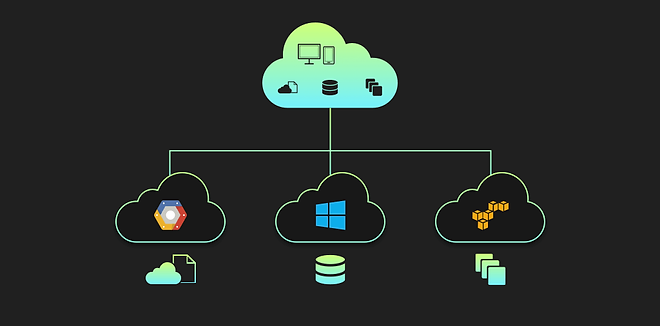In today’s digital landscape, businesses are increasingly adopting multi-cloud strategies to leverage the strengths of multiple cloud providers while mitigating risks associated with vendor lock-in and service outages. A multi-cloud approach allows organizations to distribute workloads across different cloud environments, optimizing performance, enhancing scalability, and bolstering resilience against disruptions.
What is Multi-Cloud Strategy?
A multi-cloud strategy involves using services from multiple cloud providers, such as Amazon Web Services (AWS), Microsoft Azure, Google Cloud Platform (GCP), and others, to meet specific business needs. This approach contrasts with a single-cloud strategy, where organizations rely exclusively on one provider for all their cloud computing needs.
Benefits of Multi-Cloud Strategy
- Reduced Dependency and Vendor Lock-In: By distributing workloads across different cloud providers, organizations reduce dependency on any single vendor. This mitigates the risk of service disruptions, price fluctuations, or operational issues that could arise from relying on a single provider.
- Improved Performance and Scalability: Multi-cloud environments allow businesses to select cloud services tailored to specific workload requirements. For example, high-performance computing tasks may benefit from the specialized offerings of one provider, while data storage and analytics could leverage another provider’s robust infrastructure.
- Enhanced Data Residency and Compliance: Organizations with global operations can deploy data and applications in regions compliant with local regulations and data residency requirements. Multi-cloud strategy facilitates adherence to data sovereignty laws and industry-specific regulations like GDPR or HIPAA.
Key Considerations
While multi-cloud strategy offers numerous advantages, it also presents challenges that require careful consideration:
- Interoperability and Integration: Managing interoperability between different cloud environments requires robust integration frameworks and APIs to ensure seamless data flow and application portability.
- Cost Management: Monitoring and optimizing costs across multiple cloud providers can be complex. Organizations must implement effective governance and cost management practices to avoid unexpected expenses and optimize resource allocation.
- Security and Compliance: Maintaining consistent security controls and compliance standards across diverse cloud environments is critical. Organizations must implement comprehensive security measures, including identity and access management (IAM), encryption, and threat detection, to safeguard data and applications.
Use Cases and Applications
Multi-cloud strategy is particularly beneficial for:
- Disaster Recovery and Business Continuity: Distributing critical workloads across geographically dispersed cloud regions ensures continuity of operations and minimizes downtime during regional outages or disasters.
- Hybrid Workloads and Flexibility: Organizations can deploy hybrid architectures, integrating private cloud resources with public cloud services, to balance performance, security, and cost-efficiency based on workload characteristics.
- Global Expansion and Localization: Multi-cloud enables organizations to expand into new markets quickly by deploying applications in cloud regions that comply with local regulations and customer preferences.
Future Trends
As the adoption of multi-cloud strategies continues to grow, advancements in cloud-native technologies, containerization, and orchestration platforms (such as Kubernetes) will play a crucial role in optimizing workload management and enhancing operational efficiency. Additionally, the integration of artificial intelligence (AI) and machine learning (ML) capabilities across multi-cloud environments will drive innovation in predictive analytics, automation, and personalized customer experiences.
Conclusion
Multi-cloud strategy empowers organizations to achieve greater agility, scalability, and resilience in an increasingly interconnected digital ecosystem. By strategically distributing workloads across multiple cloud providers, businesses can optimize performance, mitigate risks, and capitalize on the diverse capabilities offered by different cloud environments. Embracing a well-executed multi-cloud strategy is pivotal for enterprises seeking to innovate, expand globally, and maintain competitive advantage in today’s dynamic marketplace.
